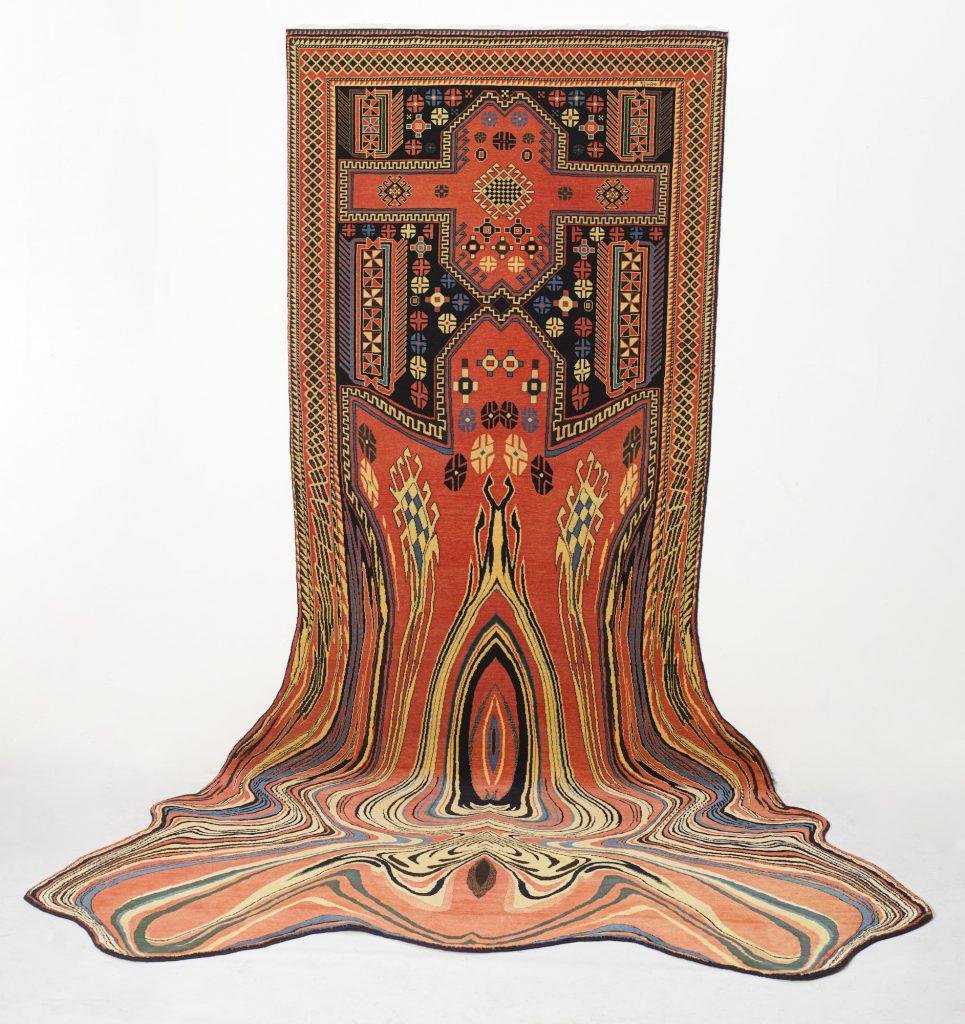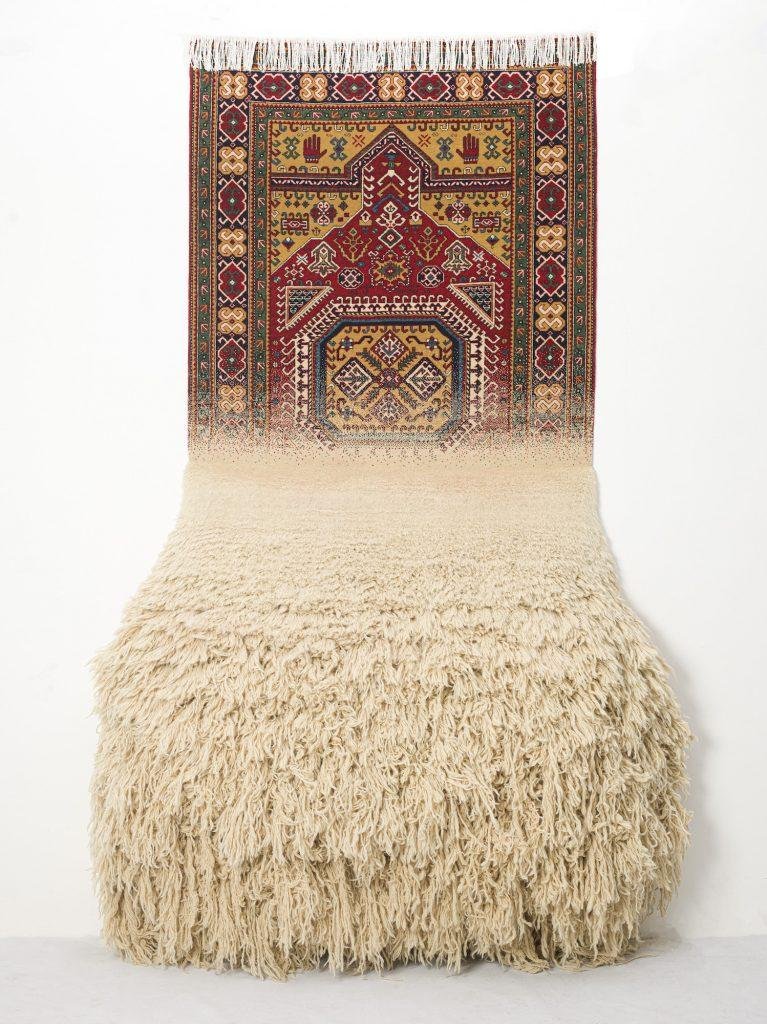Azerbaijani artist’s sculptural rugs blur line between art, craft, optical illusion PHOTO
Multidisciplinary artist Faig Ahmed’s rugs hang on the wall like paintings and often appear to melt onto the floor in pools of color.
Ahmed’s surrealist approach to textile art blurs the line between craft, fine art, and optical illusion, yet it’s still grounded in a rich tradition of carpet-weaving that goes back centuries, Artnet News reports.
Ahmed is an Azerbaijani artist who lives and works in Baku. Possessing an anthropologist’s affinity for research, he views the carpet as a metaphor, an art piece, and a language system. He weaves symbols and colors the way a poet would weave words to examine philosophical and aesthetic ideas.
“He is a student of languages and culture,” said Nina Levent, Ph.D., Founding Director of Sapar Contemporary Gallery. “He sees patterns as a linguistic system and a source code for civilization, a way to carry knowledge forward—cultural, spiritual, artistic knowledge.”

Ahmed’s interest in poetry is echoed in the titles of his works from 2021, which include the names Shams Tabrizi and Nizami Ganjavi, both 12th-century Persian poets and spiritual masters. Ahmed exhibited this series, along with one rug he started a month before the pandemic, at Sapar Contemporary last year. These collectible rugs can be acquired through the gallery, ranging in price from $70,000 to $200,000.
The largest (and most expensive) rug Ahmed has completed to date—Doubts 2020 (2021)—begins with the intricate patterns of a traditional Azerbaijani carpet before seeming to spill into a surreal swirl of burgundy, blue, pale green and yellow, which gathers in an abstract rainbow of colors on the floor.

The glitchy, surreal nature of his work can partly be attributed to the technology he uses. Ahmed begins each rug with a digital drawing. He then sketches the design on a computer before transferring it to a special engineering paper where every knot in the rug is accounted for. Next, he hands the sketches to Azerbaijani textile workers and carpet-makers, who weave the carpet from wool or silk thread that has been hand-dyed with natural hues. The weaving process takes two to four highly skilled women anywhere from two and a half to six months to complete.
Ahmed is part of a rich culture of craftsmanship and a new wave of Azerbaijani artists seeking to explore and stretch the possibilities of their inherited medium. Chingiz Babayev has been paving the way for conceptual carpet art since the mid-’90s when he wove leaves and fruits to create an Azerbaijanian carpet that he displayed in public spaces, while multidisciplinary artist Farid Rasulov carpeted an entire room, from ceiling to floor to furniture, for the Azerbaijani Pavilion of the 2013 Venice Biennale. Faig Ahmed himself represented Azerbaijan at the nation’s inaugural pavilion at the Venice Biennale in 2007.








